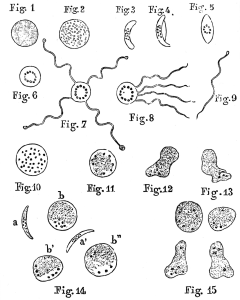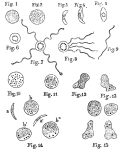by Daniel A. Middleton, DC – ICPA:
The germ theory states that diseases are due to specific microorganisms, which are capable of transmission from body to body. Yet although it is widely accepted by medical professionals, forming the basis for billions of dollars of healthcare spending (actually sickness care, but that’s another article), the fact that so many people believe it to be true doesn’t make it so. This is one of the classic logical fallacies: argumentum ad populum, the appeal to the majority, where a thing is stated to be true simply because so many people believe it.
That didn’t work for the belief that the earth was flat, and it shouldn’t work for a theory of disease that is increasingly coming under fire from the scientific community and whose fundamental premise was known to be flawed almost from the beginning. I am reminded of the famous quote by Anatole France: “If fifty million people say a foolish thing, it is still a foolish thing.”
Everyone has heard of the Black Plague that swept through Europe in the Middle Ages, resulting in the death of nearly a third of the European population (25 million people dead over the five-year period between 1347 and 1352). What is most interesting, however, is the other two-thirds—the ones who didn’t die. Many times the survivors were members of the same family as the victims, sharing a home and meals across the same family table. What about them—why didn’t they ‘catch’ the disease? Were they just lucky?
I’m not denying that the disease itself existed; it’s well-documented. The Bubonic Plague, associated with the bacterium named Versenia pestis, was one of the deadliest pandemics in human history—and one of the most studied. Instead, my argument is against the ‘germ theory of disease’ itself, the overriding idea in many people’s minds that exposure to a germ almost always equals disease, when common sense tells us that this simply is not the case.
The germ (or virus or bacteria) might well be the agent of disease, but the cause is much more complex than that. Otherwise, as chiropractic pioneer B.J. Palmer said, eventually no one would be alive to tell you about it! If our bodies can be kept whole and healthy, then the germs, which we come into contact with every day, would have no purchase. One of the goals of chiropractic is to have your body function at such a level that you don’t get sick very often—and that when you do, your immune system, stronger because of more efficient body-brain communication, is better able to fight off the disease, letting you recover more quickly.
Chiropractic is a vitalistic way of looking at our ideas of health and wellness, of how we get sick and why. Very often, it’s at odds with the predominant (mechanistic) model of health that everyone is used to. With the number of drug ads on television and in magazines, and news shows touting the latest medical advancement to treat this or that disease (many of which show up later with unpredicted—maybe even unpredictable—side effects or problems) and the countless TV shows idolizing medicine (e.g. House, ER, Grey’s Anatomy, Nip/Tuck, etc.) all the way back to the early days of television (City Hospital and The Doctor first appeared back in 1951, with the more well-known and iconoclastic Dr. Kildare and Ben Casey showing up ten years later).
Is it any wonder that we all grew up believing in the medical model of health care? After all, surely we could trust Robert Young’s kindly and grandfatherly Marcus Welby, M.D. In fact, we trusted him so much that Young made a subsequent commercial for a popular pain reliever (“I’m not a doctor, but I play one on TV…”) that became a well-worn cliché. But what if the foundation on which the entire medical model rests is flawed? What if the “germ theory of disease” is not quite so cut and dried as we’ve been led to believe? Highly controversial when it was first proposed, the germ theory is now the cornerstone of modern medicine, and its chief proponent, Louis Pasteur, a demigod in the medical canon. But is what we remember Pasteur for the last he said on the subject?
Everyone is familiar with Pasteur’s name, but one of his contemporaries and chief opponents was a scientist named Claude Bernard (1813–1878), who argued that it was not the ‘seed’ (the germ) that caused disease, but was instead the ‘soil’ (the human body). Bernard argued that germs are nothing more than opportunistic organisms. It was an argument that persisted throughout their careers, and for his entire life Pasteur was convinced that germs lay at the cause of all disease. Only on his deathbed—with Claude Bernard present—did Pasteur finally admit that Bernard was right. In the end, Pasteur came to realize that the germ was not the only element in determining who became sick and who remained well.
What this tells us is that modern medicine (or Big Pharma, as the pharmaceutical companies with revenues exceeding $3 billion are often called) has based its fundamental premise on a theory that even its most well-known proponent—as Pasteur arguably was—recanted in the end. For the past one hundred years, modern medicine has pursued a theory that is, at best, only a single aspect of the cause of disease and, at worst, a theory flawed at its core.
How much better spent would our health dollars be—in treatment, education and research—if they supported instead research into how to make the “soil” less hospitable to the “seed,” rather than chasing cures and potions for every collection of symptoms that can be named? Just as in a court of law deathbed confessions are given an extra weight, so too should we regard Pasteur’s final comment on his most famous theory: “Bernard avait raison. Le germ n’est rien, c’est le terrain qui est tout.” (“Bernard was right. The seed is nothing, the soil is everything.”)
Article originally posted at ICPA.org.
